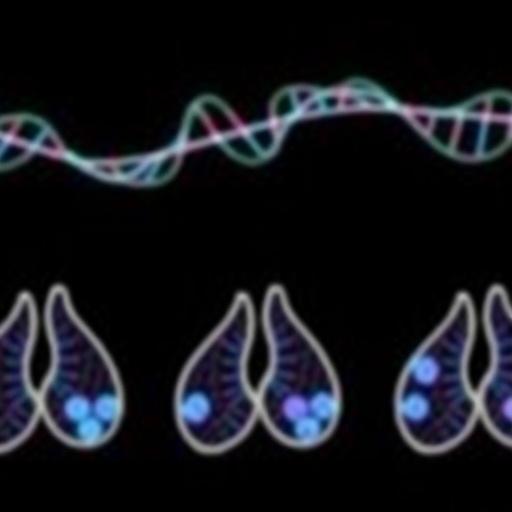1. Medicare Advantage beneficiaries run higher risk of readmission compared with traditional Medicare
Abstract: http://annals.
Editorial: http://annals.
URLs go live when the embargo lifts
Medicare Advantage users had higher risk-adjusted 30-day hospital readmission rates compared to traditional Medicare beneficiaries. Hospital admissions were compared for three common medical conditions. Findings from a retrospective population-based analysis are published in Annals of Internal Medicine.
Hospital readmissions are common and cost Medicare $26 billion annually. Reducing readmission rates has become a priority for clinicians, hospitals, and payers, particularly Medicare. As such, the Medicare Hospital Readmissions Reduction Program penalizes hospitals with worse than expected 30-day-readmission rates. However, readmission rates are calculated using data for traditional Medicare beneficiaries only, and not from those enrolled in the rapidly growing Medicare Advantage program.
Researchers from Brown University School of Public Health linked data from the Medicare Provider Analysis and Review (MedPAR) file with the Healthcare Effectiveness Data and Information Set (HEDIS) to investigate whether Medicare Advantage enrollees hospitalized for heart failure, pneumonia, or acute myocardial infarction had lower readmission rates than traditional Medicare enrollees. They found that, between 2011 and 2014, HEDIS data underreported hospital admissions for the medical conditions studied, and admissions that were incorrectly excluded had higher readmission rates than those that appeared in HEDIS data. Despite this, in analyses using the linkage of HEDIS and MedPAR, Medicare Advantage beneficiaries had higher 30-day risk-adjusted readmission rates than did traditional Medicare beneficiaries.
Based on previous studies, many policy observers have suggested that Medicare Advantage beneficiaries have better post-acute care outcomes than traditional Medicare beneficiaries. The authors say their study found no evidence that this happens with regard to readmission rates for three common medical conditions.
The authors of an accompanying editorial from the University of Minnesota School of Public Health suggest that while the study methodology is rigorous, the results should be interpreted with caution. The diagnosis codes on hospital claims were used for case-mix adjustment and may be subject to variation. In addition, the study included a cross-sectional comparison of Medicare Advantage versus traditional Medicare enrollees. If there were differences in the attributes between the enrollees in both programs that were related to both the choice of program coverage and hospital readmissions that are not captured by case-mix adjustment, then the estimates in the study may not capture the causal effect of Medicare Advantage enrollment.
Notes and media contacts: For an embargoed PDF please contact Lauren Evans at [email protected]. To speak with the lead author, Orestis A. Panagiotou, MD, PhD, please contact Mollie Rappe at [email protected].
2. Adrenal tumors found during imaging rarely change after initial diagnosis, but may increase risk for cardiometabolic comorbid conditions
Abstract: http://annals.
Editorial: http://annals.
URLs go live when the embargo lifts
Non-functioning adrenal tumors (NFAT) or adenomas causing mild autonomous cortisol excess (MACE) found during imaging are not likely to grow or change in hormonal function after initial diagnosis. However, these tumors may carry an increased risk for cardiometabolic comorbid conditions. Findings from a systematic review and meta-analysis are published in Annals of Internal Medicine.
Incidental detection of adrenal masses by imaging is increasingly common and is found in about 5 percent of the population. While common, the natural history of adrenal incidentalomas is still incompletely understood. Most are benign, but it is important to determine which, if any, will develop into something more serious, such as cancer or Cushing syndrome, a serious condition where the adrenal tumor secretes excess cortisol.
Researchers from the Mayo Clinic and the University of Birmingham, UK reviewed 32 studies reporting outcomes on more than 4,000 patients with NFAT or MACE to determine the proportions of tumor growth, malignant transformation, incident changes in hormone function, the prevalence of incident cardiometabolic comorbid conditions, and mortality. They found that tumor growth was limited to only a small proportion of cases and was usually insignificant. MACE was associated with increased risk for growth, but the risk for development of new onset overt Cushing syndrome, primary aldosteronism or pheochromocytoma was virtually absent. The most novel finding of the review was that patients with NFAT or MACE had developed comorbid conditions and incident cardiovascular events at a high rate. There was no association between varying degrees of cortisol autonomy and cardiovascular disease and risk for death was similar between both groups.
Notes and media contacts: For an embargoed PDF please contact Lauren Evans at [email protected]. To speak with the lead author, Irina Bancos, MD, please contact Robert Nellis at [email protected].
3. Patient disease free 2 years after radiotherapy for small cell carcinoma with paraneoplastic polyneuropathy
Abstract: http://annals.
URLs go live when the embargo lifts
Radiotherapy alone may effectively treat patients with extrapulmonary small cell carcinoma and paraneoplastic neurological syndrome. A case report is published in Annals of Internal Medicine.
Small cell carcinoma is an aggressive cancer known for early and rapid metastasis. Standard treatment involves platinum-based chemotherapy combined with radiotherapy, which provides a median survival of 18 to 24 months. Paraneoplastic neurologic syndromes are rare, but when they do occur are often associated with small cell carcinoma.
Researchers from Duke University describe the case of a 71-year-old man with debilitating, progressive sensorimotor neuropathy that the authors believe was an antibody-negative, immune-mediated syndrome stimulated by small cell carcinoma, based on presentation and biopsy findings. Since cytotoxic chemotherapy and immune checkpoint inhibitors were contraindicated in the patient, the patient was treated with external beam radiotherapy with the aim of local tumor regression. After 9 fractions over 12 days, the patient was able to walk small distances. One month later, the mass was no longer palpable, and the neurologic examination was unremarkable. Three months after treatment, PET-CT showed decreased metabolic activity in the mass and nodes. By 30 months, the PET-CT showed no definitive evidence of disease and the patient was fully mobile and active again.
According to the authors, these findings suggest that radiotherapy alone may be an effective treatment for patients with small cell carcinoma with paraneoplastic polyneuropathy.
Notes and media contacts: For an embargoed PDF please contact Lauren Evans at [email protected]. To speak with authors Brahma D. Natarajan, BS or Joseph K. Salama, MD, please contact Dr. Salama at [email protected].
###
Media Contact
Lauren Evans
[email protected]




